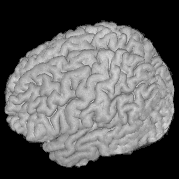 Bilge Karaçalı, PhD
Bilge Karaçalı, PhD
Professor, Electrical and Electronics Engineering Department
Director, Biomedical Information Processing Laboratory
Izmir Institute of Technology
Urla, 35430 Izmir TURKEY
Phone : 90-232-750-6534
Fax : 90-232-750-6599
E-mail : bilge at iyte dot edu dot
tr
Continue to the lab page here.
My main interest lies in constructing quantitative measures for characterizing
disease related tissue abnormality and damage using all available information
sources including but not limited to bioimaging modalities, genomics,
proteomics, as well as clinical history. In particular, I investigate the
effects of tissue abnormality and damage associated with degenerative diseases
like cancer on the appearance observed by radiological images as the macro
scale and histology slides at the micro scale and to the molecular scale
presentation as characterized by gene and protein sequences, gene expression
profiles, and metabolite concentrations. The correlations between these
appearances across macro, micro, and molecular scales reveal a much more
complete picture of the cumulative degeneration and abnormality induced on the
affected tissue by a disease process, allowing to predict one based on the
others, and collectively depict the scope of the abnormality for diagnosis and
staging, as well as prognosis and the most suitable therapeutic strategies.
My current research endeavors focus on developing effective signal processing and machine learning approaches for accurate recognition of cognitive activities from electroencephalography signals. Given that the brain accomplishes complex cognitive tasks through a network of interconnected brain regions, I believe this can be accomplished by elucidating the communication patterns specific to each cognitive task of interest as they manifest in transient inter-channel synchronization profiles. Ongoing work supported by the TUBITAK grant 117E784 awarded to my name shows promising results indicating that synchronization profiles between channel pairs and clusters offer viable recognition of motor imagery activity.
Academic work
· Quasi-supervised learning for biomedical data analysis
· Hierarchical motif vectors for protein alignment and functional classification
· Vector Space Methods in the Computational Analysis of Gene and Protein Sequence Data
· New Generation Brain-Computer Interfacing Using Transient Synchronization Between EEG Channels and Channel Clusters
Courses
· EE101 Introduction to Electrical Engineering
· EE333 Fundamentals of Probability and Random Processes
· EE430 Introduction to Systems Biology
· EE434 Biomedical Signal Processing (joint course with Zübeyir Ünlü, PhD)
· EE436 Mathematical Foundations of Signal Processing and System Control
· EE531 Probability and Random Processes
· EE549 Biomedical Image Analysis
· EE550 Computational Biology
· EE563 Selected Topics in Electrical Engineering: Flow Cytometry Data Analysis
· EE590 Scientific Research Methods and Ethics for Engineers
Research interests
·
Biomedical Information Processing
Automatic
protein classification
Computational
analysis of genetic sequences
Molecular
phylogeny algorithms
Biomedical
image analysis
Quantitative
methods in biomedical data analysis
·
Statistical Learning
Statistical
learning theory
Quasi-supervised
learning
Approximation,
classification, and detection
Automatic
target recognition and tracking
·
Computer Vision
Surface
reconstruction, shape-from-shading, photometric stereo
Multispectral
and hyperspectral vision
Remote
sensing
·
Mathematical Methods
Vector
space methods
Independent
component analysis
Multivariate
ranks
Wavelets
and multiscale analysis
Extreme
value theory
Projects
·
Modeling/Estimating Tissue Deformations in Tumor
Patients, NIH Project,
R01-NS042645-04, postdoctoral fellow,
2002-2005
·
2+2+2 Workforce Education in Biotechnology and
Bioinformatics, PA DCED Project, project coordinator, 2005
·
Elastic Alignment of Multimodality Medical Images
using Information Theoretic Point Similarity Measures, TÜBİTAK, 108E249, project investigator, 2009-2011
·
Hierarchical Motif Vectors for Protein Alignment and
Functional Classification, European
Research Counsel FP7, PIRG-GA-2008-230903, project
coordinator, 2009-2012
Awards
·
1992 Ranked
40th nationwide in University Entrance Examination
·
1997 Ranked
1st nationwide in Graduate Education Examination
·
2007 2nd
prize, GPBA Spring Retreat Poster Competition, general category
Software:
· Simulation of tissue atrophy (distributed here)

· Quasi-supervised learning (distributed here)
Educational History:
· 1997 - 2002 North Carolina State University,
M.S., Ph. D. in Electrical
Engineering
Minor in Mathematics
Dissertation "Vector Space Methods For Surface Reconstruction From One Or
More Images Acquired From The Same View With Application To Scanning Electron
Microscopy" web
access
· 1992 - 1997 Bilkent University,
B.S. in Electrical Engineering
Pictures: